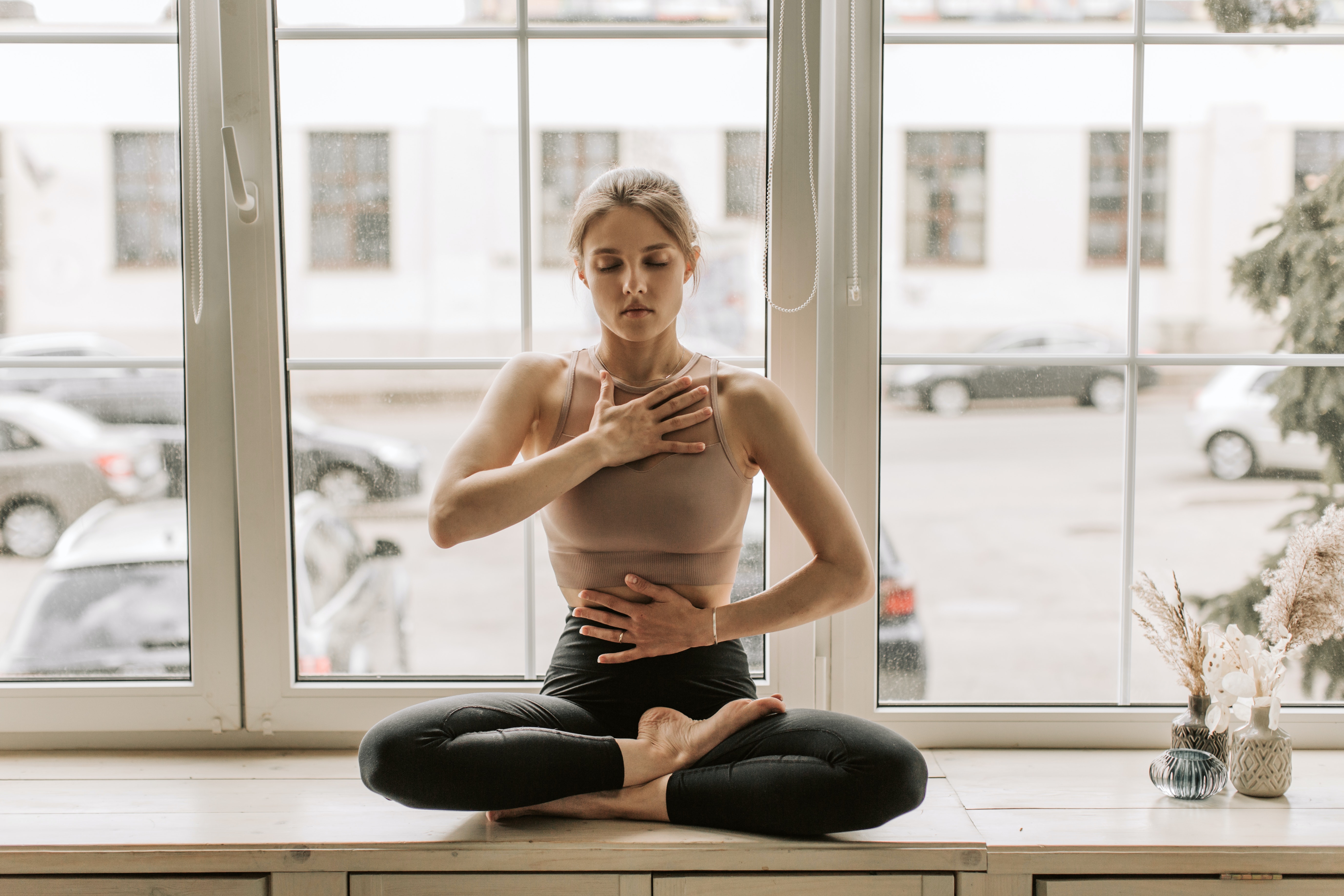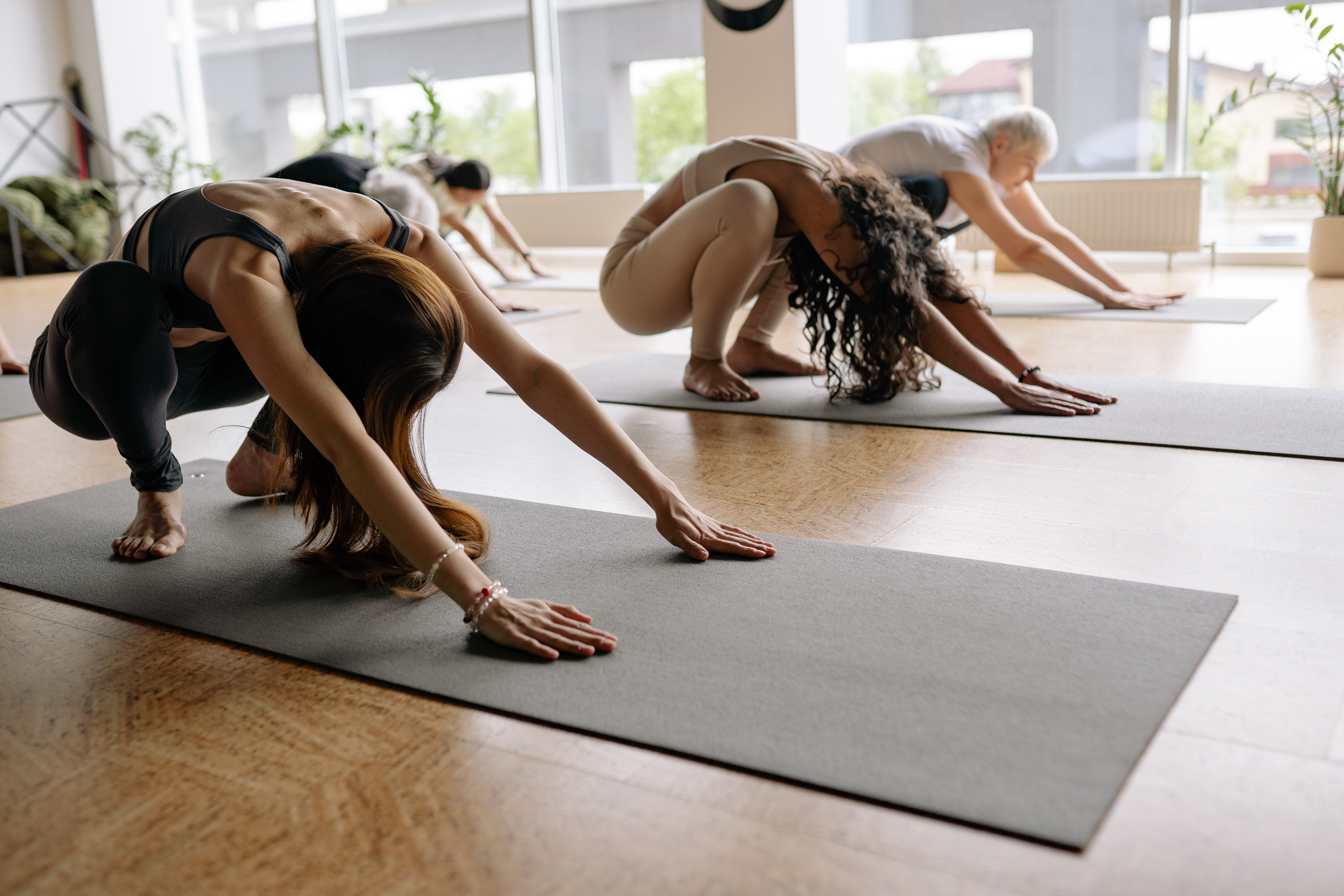Angela Lazova is a psychologist and licensed yoga instructor.
If you suffer from PTSD, approaching topics related to traumatic experiences can be more than just reading words on a page. Reading this article may be a journey that requires both mental and physical preparation. While I cannot fully understand the intricacies and depth of your experiences, I hope to offer a space where you can engage with this content at your own pace.
So, before we dive into this emotionally-packed topic, consider two suggestions. First, create an environment that makes you feel safe before reading. And second, stop whenever you feel overwhelmed. There'll be no test checking if you've read the whole thing.
With this in mind, let’s see whether and how yoga can help us in letting go of the burden we carry with us.
Understanding PTSD and Its Impact
The National Institute of Health defines PTSD as a disorder that may develop after a person experiences an extremely scary, dangerous, or shocking event - what we also call a trauma.
However, while these technical definitions focus on the mental problems and symptoms as a result of the trauma, I think it's vital for us to pause and recognize that the way our body reacts is, in many ways, natural and beneficial.
Your Body Is Trying To Protect You
These responses have evolved over time to act as our personal bodyguards, sounding an internal siren whenever we brush up against potential threats or reminders of past negative experiences.
These reminders, or "triggers," as they're often called, are cues in our surroundings that, even in the most subtle of ways, echo the traumatic event we experienced. They might not always be overt, sometimes lurking just beneath our conscious awareness.
A fitting way to envision this is by thinking about the proximity sensors in modern vehicles. As you inch closer to another car or perhaps a wall, they chime in with a beep, a gentle nudge, signaling, "Hey, you might want to slow down a bit." For us, it's our body's own intuitive way of saying: "Be cautious, remember last time?"

So Where Does It Go Wrong?
Our bodies and minds are marvels of evolution, designed to protect us in the face of danger. Just like the car's proximity sensor is meant to prevent collisions, our internal alarm system aims to keep us safe. But imagine if that car sensor kept beeping even when there was no nearby obstacle or if it sounded off every time you passed a vehicle on the highway, even at a safe distance. It would become distracting, even debilitating.
Similarly, while our body's natural response to trauma is intended to shield us, sometimes, especially if the negative experience really shook us, our nervous system can become overly sensitive.
Instead of alerting us only to genuine threats, it begins to react to reminders or triggers that aren't inherently dangerous. And this is what doctors and psychiatrists recognize as PTSD.
This hyper-vigilance can lead to a cascade of emotional, mental, and physical symptoms. After all, that alarm system causes us to relive the traumatic event through intrusive thoughts, painful memories, nightmares, and intense emotional or physical reactions.
This is how those experiences remain fresh; we carry them with us, unable to fully move on.
In essence, we’re caught in a harmful loop, and we need help to get to a balanced state. Just as we might consult a mechanic to fine-tune that overly sensitive car sensor, seeking help for PTSD means finding ways to adjust and reset our body's natural alarm system.
How Can Yoga Help?
Disclaimer: Yoga can be a wonderful adjunctive therapy to support your well-being, but it's essential to understand that it's not a standalone solution for PTSD or any medical condition. Always consult a medical professional or therapist before integrating yoga or any other complementary practices as a part of your therapy.
Yoga can help bring our body back to a more relaxed and balanced state, which can slow down our nervous system and give us a break from that broken and debilitating beeping - a moment of peace, if you will.
You may primarily think of yoga as a good stretch, but its holistic approach to well-being is what makes it an effective therapeutic practice for many mental health issues, including anxiety disorders, depression, and PTSD. For instance, a randomized controlled study found that women with histories of interpersonal violence no longer met the criteria for PTSD after three years of practicing yoga as an adjunctive treatment.
Yoga works because it diverts our attention inward and promotes self-awareness, which has the power to reprogram the brain’s reward system and drive change. In Vera Ludwig’s words, a neuroscientist at the University of Pennsylvania:
“Mindfulness means that you’re not judging yourself. You’re observing what is there and letting it be. You’re in the moment and seeing whatever is there—negative or positive—and you accept it.”
Studies and meta-analyses looking closely at meditative practices and yoga give further support to the idea that yoga is a promising complementary approach to the treatment of PTSD.
What this means is that regular yoga sessions focused on self-awareness and mindfulness techniques create a bridge between our mind and body that helps us better understand ourselves, control our instincts, and improve our quality of life.
However, keep in mind that yoga isn't a magical fix – it's just another tool in your arsenal, but a pretty fabulous one at that.

The Essence of Trauma-Sensitive Yoga
So far, we’ve talked about yoga in really general terms. But, with so many different styles and methodologies, a very reasonable question that arises is: does it make a difference what type of yoga we’re practicing?
Yes, it does. While I personally believe that no yoga practice can affect us negatively, as long as we respect our body’s boundaries, some yoga styles are developed specifically for traumatized individuals who may be overwhelmed by traditional postural yoga practices.
This brings us to trauma-sensitive yoga (TSY), which was developed by the Justice Resource Institute's Trauma Center in Brookline, Massachusetts, as a form of therapy.
TSY is a trauma-informed practice able to identify and mitigate triggers while still providing all the benefits of a traditional yoga practice.
Trauma-sensitive yoga optimizes the yoga practice in five core domains:
- Environment - The practice should feel like walking into a friend's living room—safe, warm, and genuinely inviting.
- Physical Exercise - The practice isn’t about acing a pose; it's about connecting inward. It emphasizes feeling secure and embracing self-acceptance.
- Teacher Guidance - TSY instructions allow space between the teacher and the student. They're there with you, but they also know when to give you your space.
- Teacher Qualities - TSY instructors are kind souls who understand your pain. Their approach ensures you always feel in control and at ease.
- Language - The class feels like a soft invitation, not a demand. The language used is gentle, allowing you to take the lead.
In fact, the practices and principles developed for trauma-sensitive yoga should be a staple in all gentle yoga styles, such as yin yoga, restorative yoga, and hatha yoga.
Additional Yoga Principles and Practices That Help With PTSD
As we delve deeper into yoga’s benefits for our psychological health, let’s explore additional principles and practices that can help us reduce the symptoms of PTSD.
Meditation and Mindfulness Practices: Think of yoga as a sort of mental GPS. While PTSD might occasionally reroute you to not-so-happy places from the past, yoga gently nudges you back to the “here and now” with guided meditation and mindfulness exercises.
Breathing Exercises: Ever feel like your inner alarm clock is stuck on “snooze?” Yoga's deep, rhythmic breathwork can be the reset button, helping to shift your nervous system from a "red alert!" state to a serene “it’s all okay" mode.
Slow and Controlled Movements: PTSD can sometimes feel like a broken cassette player—pausing, playing, and rewinding an unpleasant event while you feel powerless. The gentle and slow movements in yoga can make you feel more in control of yourself.
Tension Release: Trauma can make our bodies hoard tension like a squirrel stashes nuts. Active movements, deep stretches, and rhythmic breathing are all like spring cleaning, helping us to declutter and let go of that pent-up stress.
Engaging in a yoga practice that incorporates these principles is guaranteed to make you feel better and even help you reduce your symptomatology. But here's the thing—while these practices are healing, the nuances of PTSD mean that sometimes, a little personalization is key.

Tailoring Yoga Practices for PTSD
Yoga is like water; it shapes and adapts to the unique contours of our life. Whether we battle with anxiety, depression, PTSD, or another psychological issue, we can use its flexibility to personalize it to our specific needs.
So, what are the most important considerations when using yoga as a therapy for PTSD?
Recognizing Triggers and Boundaries
Every individual's journey with PTSD is unique, and so are the triggers that might shake their inner peace. Before starting with yoga, it’s essential to do a bit of introspection and identify potential triggers. This could be anything from specific poses to words or even the type of music in the background. Recognizing these is the first step to ensuring that the yoga practice will be a sanctuary and not an additional source of distress. The second step is being empowered to say no when you don’t feel comfortable following a sequence or even a meditative direction.
Adapting Yoga Poses and Practices
Not every yoga pose is a one-size-fits-all. Some might evoke feelings of vulnerability or discomfort, especially for people suffering from PTSD. It's okay to modify or even skip certain poses altogether. Remember, yoga is not a competition; it's a personal journey. Using props, opting for variations, or even creating your own sequence that resonates with comfort and safety is the best way to go about it. The goal is to feel grounded, connected, and at peace, so feel free to modify as you see fit. This also applies to practicing yoga at a studio.
Creating a Safe and Nurturing Environment
The ambiance can make a world of difference. For people with PTSD, perceiving the yoga space as a relaxing and safe environment is paramount. This means that what works miracles for some (e.g., large groups practicing outdoors in nature vs. practicing alone at home) can be a trigger for others and vice versa. Even the smallest things can trigger a reaction, such as the gender of the yoga teacher or the lights, smells, and sounds in the room. Personalize the space where you practice and make it your own. For instance, you can choose soft, soothing music or even keep a familiar blanket or cushion nearby.
Should You Try Yoga For PTSD?
Embarking on a healing journey is deeply personal, and everyone's path is unique. But don’t lose out on the many benefits by shying away from it. The practice, when done right, offers soft moments of peace, gentle breaths of relief, and a safe space where healing is allowed to unfold in its own way and time.
As we say goodbye, let’s take a moment to express our admiration and gratitude for the resilience and strength of every individual struggling with PTSD. Your effort to engage with this content speaks volumes about your courage and potential for change.
FAQ
1. Can yoga alone cure PTSD?
While yoga offers relief and comfort and can be a valuable tool in the healing process, it's not a standalone cure for PTSD. Think of it as a supportive friend, offering a hand during tough times. For a comprehensive treatment, it's essential to consult medical professionals and consider other therapies.
2. Are there any specific yoga poses to avoid for those with PTSD?
PTSD is deeply personal, and what might be comforting for one might be triggering for another. Some might find poses that are too physically challenging to be triggering. This is why I mentioned several times that it’s essential to listen to your body and intuition. If a pose doesn't feel right, it's okay to try a variation or skip it altogether.
3. How often should I practice trauma-sensitive yoga?
Quality over quantity is the mantra here. It's less about clocking in hours and more about ensuring each session feels right. For some, a short daily practice might be soothing, while others might prefer longer sessions a few times a week. Always remember to tune into your body's needs and consult with a yoga therapist or instructor familiar with PTSD.
4. Can trauma-sensitive yoga trigger traumatic memories?
It's possible. In fact, just reading this article can make you uncomfortable. The very nature of PTSD means that very specific and personal triggers bring traumatic memories to the forefront of your mind. While yoga styles such as TSY are designed to minimize potential triggers, everyone's experience is unique. It's essential to have supportive mechanisms in place and to consider practicing under the guidance of a trained professional.



Comments
Existing Comments